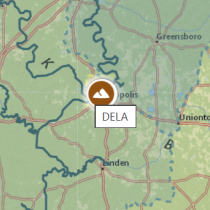NEON to Begin Construction on First Three Sites
February 13, 2012
NEON will break ground on three sites starting early Summer 2012: Ordway-Swisher Biological Station in Florida, Harvard Forest in Massachusetts, and Central Plains Experimental Range in Colorado.
NEON anticipates funding from the National Science Foundation of approximately $60M for FY2012, which will allow NEON to begin construction on the three sites plus an additional six to eight sites by the end of the year. Information on the additional sites will be released as soon as it is available. "I am excited to see NEON officially start so we can move from scaling from individual measurements in the field and laboratory studies to generating predictability at large scales," said Michael Allen, Director of the University of California Center for Conservation Biology and Chair of the Department of Plant Pathology and Microbiology. "NEON will provide a backbone for so many critical efforts at measuring environmental change." NEON will also continue to prototype biological sampling efforts at several NEON sites and conduct the first test flights of the airborne observing system this year.
The first three NEON sites are expected to be completed and publicly streaming limited data in late 2013, and to be in full operations by 2014. Completion of a NEON site, which includes the physical infrastructure, sensor installation, and field data collection, can take anywhere from one to three years, depending on permitting, weather and other factors. Sites are considered fully operational when all physical infrastructure and data collection procedures are in place and sensor and field data are being collected and are streaming. "NEON's time has come; strong support from the National Science Foundation and firm collaboration with our site hosts has ensured the successful construction of the project," said Dr. Tony Beasley, NEON Project Manager. "The NEON team is more than ready for the task ahead." NEON's priority is to ensure long-term scientific integrity throughout the construction process. NEON's site construction and consequent data collection schedules are designed to ensure the scientific community receives the best long-term and valuable data to understand environmental change. NEON plans to maximize the diversity of conditions experienced in early construction in order to get a continental-scale snapshot as quickly as possible, and to test equipment, protocols and methods to make sure they work across the enormous diversity of U.S. conditions. Testing systems across the entire nation will help to determine the quality and consistency of all construction and operating procedures and processes and allow NEON time to make adjustments during the construction period.
